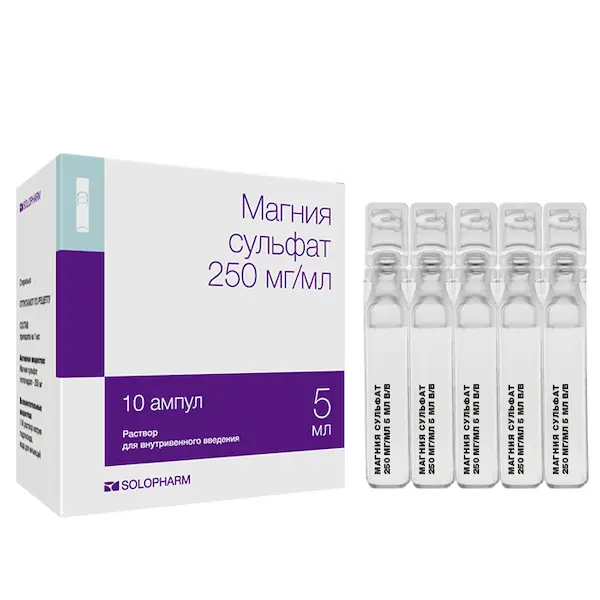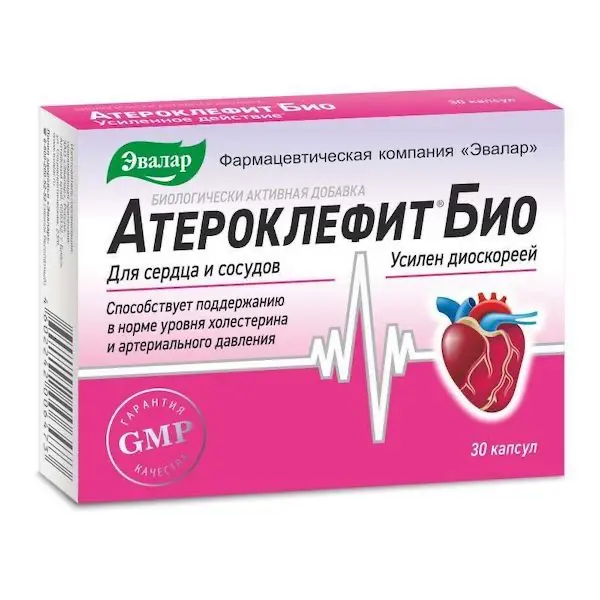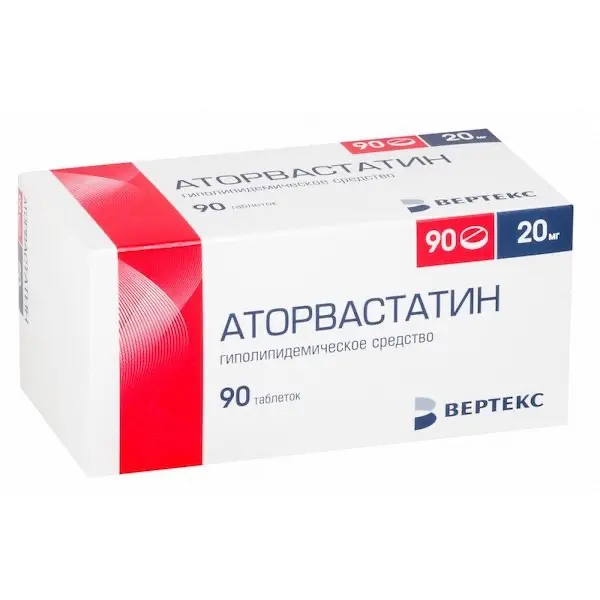Description
Magnesium Sulfate Pharmacodynamics
When administered parenterally it has anticonvulsant, antiarrhythmic, antihypertensive, antispasmodic effect, inhibits neuromuscular transmission in high doses, has tonic effect, inhibits respiratory center.
Magnesium is a physiological calcium antagonist and can displace it from binding sites. It regulates metabolic processes, inter-neuronal transmission and muscle excitability, prevents the entry of calcium ions through the presynaptic membrane, reduces the amount of acetylcholine in the peripheral nervous system and central nervous system. Relaxes smooth muscles, reduces blood pressure (mostly elevated), increases diuresis. The mechanism of anticonvulsant action is associated with decreased release of acetylcholine from neuromuscular synapses, and magnesium inhibits neuromuscular transmission, has a direct inhibitory effect on the central nervous system.
Antiarrhythmic action of magnesium is due to reduction of excitability of cardiomyocytes, restoration of ionic balance, stabilization of cell membranes, disruption of sodium current, slow incoming current of calcium ions and one-way potassium current.
Gokolytic action develops as a result of inhibition of contractility of myometrium (reduction of absorption, binding and distribution of calcium ions in smooth muscle cells) under the influence of magnesium ions, increased blood flow in the uterus as a result of expansion of vessels.
Magnesium is an antidote for poisoning with salts of heavy metals.
Systemic effects develop almost immediately after intravenous administration. Duration of action when administered intravenously is 30 min.
Indications
Arterial hypertension (including hypertensive crisis with cerebral edema phenomena), polymorphic ventricular tachycardia (pirouette type), seizure syndrome (for seizure suppression in eclampsia, to prevent convulsions in severe pre-eclampsia, to relieve severe uterine contractions), poisoning with salts of heavy metals (mercury, arsenic, tetraethyl lead), hypomagnesemia (including increased magnesium requirement and acute hypomagnesemia).
Contraindications
Hypersensitivity to the drug components, severe arterial hypotension, respiratory center depression, severe bradycardia, atrioventricular block (AV block of degree I-III), severe chronic renal insufficiency (creatinine clearance less than 20 ml/min), prenatal period (2 hours before delivery), conditions associated with calcium deficiency.
Dosage and administration method
- Doses are adjusted taking into account the therapeutic effect and the serum magnesium ion content.
- Preeclampsia and eclampsia. The saturation dose is 2-4 g in 5-20 min (infusion). Maintenance dose – 1-2 g per hour.
- Uterine uterine metastasis. The saturation dose is 4 g after 20 min (infusion). Maintenance dose – 1-2 g per hour at first, later 1 g per hour (can be administered by drip 24-72 h).
- Hypomagiaemia.
In neonates. The daily dose is 0.2-0.8 ml/kg intravenously slowly. - In adults. Mild. Magnesium sulfate solution is administered parenterally if oral administration of magnesium preparations is not possible (due to nausea, vomiting, impaired resorption in the stomach, etc.) a daily dose of 1-2 g. This dose should be given as a single dose or in 2-3 doses.
- Severe. Initial dose is 5 g, which is delivered in 1 liter of infusion solution and slowly administered intravenously. Dose according to the concentration of the drug in blood serum.
- Prevention of hypomagiaemia in patients receiving only parenteral nutrition. If there is no magnesium in nutrient solutions, it is added additionally. Daily dose is 1.5-4 g. Usually 1 g of magnesium sulfate is added to 1 liter of parenteral nutrition solution. Maximal daily dose of magnesium sulfate for adults is 40 g.
- In hypertensive crises, 5-20 ml of magnesium sulfate 250 mg/ml solution is administered intravenously (slowly).
- To stop arrhythmias, 1-2 g are administered intravenously for about 5 min, repeated administration is possible.
- Doses of magnesium sulfate are given in grams. They correspond to the amount of 250 mg/ml solution: 1 g – 4 ml; 2 g – 8 ml; 3 g – 12 ml; 4 g – 16 ml; 5 g – 20 ml; 10 g – 40 ml; 15 g – 60 ml; 20 g – 80 ml; 30 g – 120 ml; 40 g – 160 ml. Magnesium sulfate solution in ampoules is diluted with injection solutions: 0.9% sodium chloride or 5% dextrose (glucose).
- Procedure of work with polymeric ampoule:
1. Take the ampoule and shake it by holding the neck.
2. Squeeze the ampoule by hand, taking care not to release the drug, and twist and separate the valve.
3 Connect the syringe to the ampoule immediately through the resulting opening.
4. Turn the ampoule over and slowly draw the contents into the syringe.
5. Slide the needle onto the syringe.





